Please welcome my guest author Alice Rothchild with her book list about Challenging Erasure: 15 books for kids that talk about Palestine and the lived experience of Palestinians. Her newest book is Finding Melody Sullivan.
Finding Melody Sullivan by Alice Rothchild
Finding Melody Sullivan is my contemporary young adult novel about trauma, (from the personal to the political), loss, relationships, love, identity, questions around how to live a moral and honest life, but the thing that makes this book different from every other teen drama is that much of the story takes place in Hebron in the West Bank, Palestine. [young adult, ages 15 and up]
We are also doing a 2 signed and inscribed giveaway of Finding Melody Sullivan. To enter, please fill out the Rafflecopter at the bottom.
p.s. Here is another great picture book about the Palestinian experience. Author and illustrator, Aya Ghanameh, also shares resources to learn more about Palestine which I have included at the bottom.
These Olive Trees: A Palestinian Family Story by Aya Ghanameh
This is Aya’s grandmother’s story. Oraib and her family live in a refugee camp where they harvest olives and release its golden oil. Her grandmother used to live in a village called Al-Tira, by the coast of Palestine where her family raised olive trees for generations, but war came and forced them into the refugee camp near Nablus. War comes again to Nablus, and once again, Oraib and her family must flee. The olive trees must be left behind, but Oraib finds a way to keep her family’s connection to the land and the olive trees alive. [picture book, ages 3 and up]
——–
This erasure of reality starts very early in the occasional board book or picture book and continues in books for older kids with rare exceptions, often by Palestinian authors.
Unfortunately, there are many more examples of cultural appropriation and the denial of Palestinian history and lived reality, a reflection of similar attitudes within our own society.
Challenging Erasure: Books for kids that talk about Palestine and the lived experience of Palestinians
Naomi Shihab Nye has written many of the classic and most well-known books on this topic, including Sitti’s Secrets, The Turtle of Oman, and Habibi …
as well as Elizabeth Laird, A Little Piece of Ground …
and Ibtisam Barakat, Tasting the Sky: A Palestinian Childhood and Balcony on the Moon: Coming of Age in Palestine.
Less well-known books include:
Bishara, Amahl, The Boy and the Wall, undated, story and illustrations created by young people at the Lajee Centre in Aida refugee Camp, Bethlehem. Written for 5-8-year-olds in English and Arabic, the story follows a little boy who dreams of what he could be and do when he grows up if there were no separation (or apartheid) wall. The collage paper-cut illustrations are evocative and unique and would stimulate a conversation about refugee camps and refugees.
Albertalli, Becky & Saeed, Aisha, Yes No Maybe So, 2020, Balzer + Bray, an imprint of Harper Collins, is a young adult novel about Jamie Goldberg, an anxious, clutzy Jewish boy who is willing to volunteer behind the scenes for a progressive state senate candidate, and Maya Rehman, an unhappy Muslim girl whose parents are separating and who is dumped by her best friend during Ramadan. Maya agrees to work on the same campaign because her parents promise to give her a car. Campaigning with Jamie turns into a funny, painful, cross-cultural teenage love story where everything does not turn out okay, but the characters discover what they love and what they are willing to fight for.
Arafat, Zaina, You Exist Too Much, 2020, Catapult, is a provocative young adult novel about a Palestinian American girl caught between cultural, religious, and sexual identities. The story is told in vignettes from New York, Palestine, Jordan, and Lebanon. The protagonist speaks directly to readers, struggling with her queerness, with refreshing honesty and complexity.
Toha, Mosab Abu, Things you may find hidden in my ear, 2022, City Lights Books, is a painful, elegant collection of poetry evoking life in Gaza and its existential realities. The poetry is breathtaking and compelling and would captivate older young adults.
Bsharat, Ahlam, Code Name: Butterfly, 2016, Neem Tree Press, is a young adult novel, appropriate for upper middle or beginning of high school, that introduces the reader to the realities of the Israeli occupation through the life of Butterfly. She is an idealistic teen who is plagued by friends, siblings, love, and the brutal realities around her.
Abdel-Fattah, Randa, Where the Streets Had a Name, 2010, Scholastic Press, is a book for middle grade and lower-high school readers centered on thirteen-year-old Hayaat who believes a handful of soil from her grandmother’s ancestral home in Jerusalem will save her beloved Sitti (Grandmother). Hayaat lives in Bethlehem and her sitti’s village is many walls, checkpoints, curfews, and permits away. As she and her friend Samy attempt to cross the many barriers, the story unfolds with honest brutality, hopeful kindness, and humor.
Corrie, Rachel, Let Me Stand Alone: The Journals of Rachel Corrie, edited and with an introduction by her family, 2009, W. W. Norton & Company, is a book about the life and dreams of Rachel, told through her diary and drawings that she started when she was ten and ending with her tragic death at age 24, crushed by an Israeli bulldozer while defending a Palestinian family’s home. This book is suitable for young adults and is the story of how a young person became a passionate and brave advocate for the powerless. Less than ¼ of the book deals with her time in Gaza which is revealed after the reader comes to know and care about Rachel as a person.
Murad, Nora Lester, Ida in the Middle, 2022, Interlink, is a young adult novel with a touch of magical realism, a meditation on what it means to be a Palestinian American caught between cultures and expectations, between the prejudices of American kids and adults, and the tear gas and guns of Israeli soldiers. Through the taste of magic olives made by her feisty journalist aunt who died after a car accident and the blocking of a desperately needed ambulance by Israeli soldiers, Ida is transported back to Palestine where she lives a parallel life. Murad’s descriptions are richly poetic and metaphorical, anchored in her deep experience and knowledge of Palestinian life, the richness of the cuisine, the tightness of family bonds, the beauty of the landscape, and the brutality of the Israeli occupation.
Abdelrazaq, Leila, Baddawi 2015, Just World Books, is a vivid graphic novel most appropriate for upper middle and high school readers. The story focuses on the author’s father who was expelled from his ancestral home in Palestine in 1948 and finds himself living in a refugee camp in Lebanon. Drawn from first-hand experience, the author is able to communicate violence, trauma, dreams, and irony through the powerful subtleties of graphic art.
2 Signed and Inscribed Copies of Finding Melody Sullivan (2 winners!)
We are also doing a 2 signed and inscribed giveaway of Finding Melody Sullivan. To enter, please fill out the Rafflecopter below. We can only mail to U.S. and A.F.O. addresses.
Alice Rothchild is a physician, author, and filmmaker who loves storytelling that pushes boundaries and engages us in unexpected conversations. She practiced ob-gyn for almost 40 years and served as Assistant Professor of Obstetrics and Gynecology, at Harvard Medical School. She writes and lectures widely, is the author of Broken Promises, Broken Dreams: Stories of Jewish and Palestinian Trauma and Resilience (translated into German and Hebrew); On the Brink: Israel and Palestine on the Eve of the 2014 Gaza Invasion; and Condition Critical: Life and Death in Israel/Palestine and she has contributed to a number of anthologies and poetry journals. She directed a documentary film, Voices Across the Divide, and is a mentor for We Are Not Numbers, a program that supports young writers in Gaza. She received Boston Magazine’s Best of Boston’s Women Doctors Award, was named in Feminists Who Changed America 1963-1975, had her portrait painted for Robert Shetterly’s Americans Who Tell the Truth, and was named a Peace Pioneer by the American Jewish Peace Archive.
When she is not making good trouble, she loves hiking in the Pacific Northwest, playing with her grandchildren, tending to her boisterous garden, and stretching the boundaries of her cooking. To learn more, please check out her website and follow her on Facebook, Twitter, and Instagram.
p.p.s. More resources to learn about Palestine.
Books:
The 100 Years’ War on Palestine by Rashid Khalidi — Perfect introduction to the topic, goes over the 100 year history of colonization in a less academic way because of the author’s personal involvement/being present for most of these events. He’s in his 70s.
The Question of Palestine by Edward Said — Said famously wrote Orientalism, and this book is excellent on Palestine but definitely more of an academic read.
The Ethnic Cleansing of Palestine by llan Pappe — Written by an Israeli anti-zionist academic.
The Gaza Strip: The Political Economy of De-Development by Sara Roy.
Justice for Some: Law and the Question of Palestine by Noura Erakat — Erakat is a Palestinian human rights lawyer in the US.
Men in the Sun (short stories) by Ghassan
Kanafani — Work of fiction, and Kanafani is one of the most important people in Palestinian recent history. He was a revolutionary leader in Lebanon during the 70s and was actually assassinated in a car bombing.
Rifqa (poetry book) by Mohammed El-Kurd — Recent publication of poetry by El-Kurd, a young Palestinian who lives in Sheikh Jarrah in Jerusalem that israel has been trying to evict and destroy. El-Kurd has been fighting to keep his family home his entire life.
Freedom is a Constant Struggle by Angela Davis — On Black and Palestinian liberation.
Right to Maim by Jasbir Puar — A book that connects disability studies to settler colonialism with the US and Israel being used as case studies.
Mornings in Jenin (fiction) and Against the Loveless World (also fiction) by Susan
Abulhawa — Incredible books by a Palestinian-American author.
Films:
Gaza Fights for Freedom — It’s free on YouTube and directed by Abby Martin, an Israeli filmmaker who worked with Gazans on the ground to document the 2018 protests on the Gaza border.
1948: Creation and Catastrophe — A super important documentary detailing the creation of Israel with interviews with both survivors and ex-Israeli militia who were present at the founding of the settler state.
The Present — Oscar-nominated short film on Netflix about a man and his daughter in the West Bank crossing a checkpoint.
5 Broken Cameras — A documentary by a Palestinian man who filmed the weekly protests in his village in the West Bank.
Jenin, Jenin — It is available in parts on Youtube and is super relevant today considering what is happening in Jenin in the West Bank. It follows the 2002 Israeli invasion and massacre of the Jenin refugee camp.
Readings:
https://drive.google.com/drive/folders/1vvKvDiT_TLRnr-QftISLlM3EJ8eq3Wis
This is a drive folder of academic readings I collected as a student. It includes excerpts of:
Profile of the Palestinians by Edward Said Palestine in Transformation, 1856-1882 by Alexander Scholch
The Debate about 1948 by Avi Shlaim
Zionism and Colonialism: A Comparative Approach by Gershon Shafir
Citizen Strangers: The Formation of the Liberal Settler-State by Shira Robinson
On debunking myths:
https://decolonizepalestine.com/
Resources for children:
Unfortunately, there isn’t much but this is a good list: https://diversebooks.org/12-childrens-and-ya-books-by-palestinian-authors/
Organizations doing great work:
Jewish Voices for Peace — The largest anti-zionist Jewish network in North America.
Palestine Legal — Legal resource to combat suppression and retaliation against Palestinians and activists on Palestine.
Al-Qaws — Focused on queer liberation in Palestine.
National Students for Justice in Palestine — The national student movement.
Samidoun — A prison solidarity network for Palestinian political prisoners.
Instagram infographics/news sources:
IMEU
Metras Global
Eye.on.palestine
p.p.p.s. Related posts:
Arab American Book Lists for Kids
Arab American Culture in Children’s Books
Ramadan Children’s Books from Muslims in KidLit
16 Wonderful Ramadan Books for Kids of All Ages
18 Wonderful Picture Books about the Arab World
This is my collection of the best picture books I’ve read so far about the Arab world.
27 Books for Kids About the Arab World
Top 10: Middle Eastern American Children’s Books
Middle East Outreach Council Award
How To: Teach Your Children About Islam (and tolerance in the process!)
In the wake of the conflicts in the Middle East, I thought it especially important for kids to learn about Islam and the people of the Middle East which might also teach them tolerance in the process. There is so much negative stereotyping during a war that can color a child’s perspective.
Life in Afghanistan for Girls
Deborah Ellis’s Parvana series shows a realistic view of what life is like in Afghanistan for girls today. It’s heartbreaking but also so important.
The Pharoah’s Secret at Boston’s Museum of Fine Arts
Chapter book The Pharoah’s Secret by Marissa Moss discovered in Boston’s Museum of Fine Arts. Did I find Senenmut, Hatshepsut’s love there?!

Jewish Book Lists for Kids
Contemporary #OwnVoices Jewish Children’s Books
Why Jewish Stories Matter
Children’s Books to Combat Antisemitism
Holocaust Resistance Heroes Who Weren’t Jewish
10 Jewish Folktale-Inspired Books
Passover and Easter Picture Books
10 Award Winning Jewish Books for Kids
39 Haunting Holocaust Books for Kids
To examine any book more closely at Indiebound or Amazon, please click on image of book.
As an Amazon and IndieBound Associate, I earn from qualifying purchases.
Follow PragmaticMom’s board Multicultural Books for Kids on Pinterest.
My books:
Food for the Future: Sustainable Farms Around the World
- Junior Library Guild Gold selection
- Selected as one of 100 Outstanding Picture Books of 2023 by dPICTUS and featured at the Bologna Children’s Book Fair
- Starred review from School Library Journal
- Chicago Library’s Best of the Best
- Imagination Soup’s 35 Best Nonfiction Books of 2023 for Kids
Amazon / Barefoot Books / Signed or Inscribed by Me



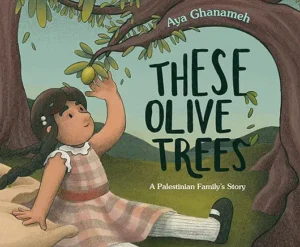
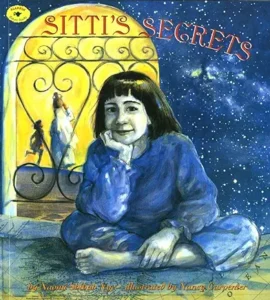
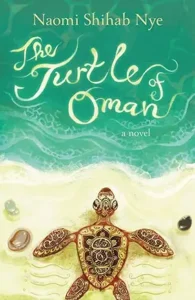
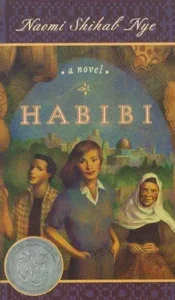
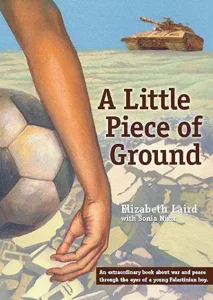

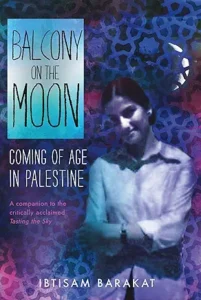

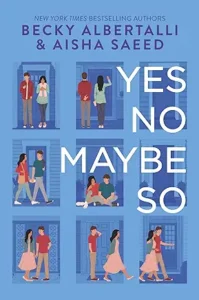






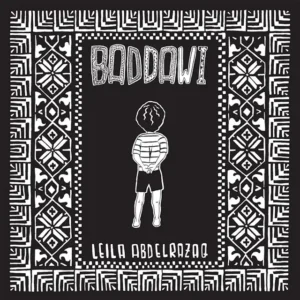


























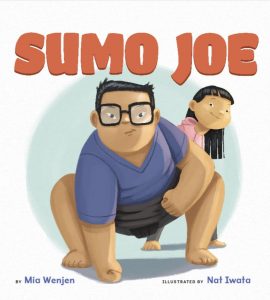


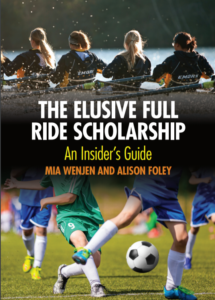




I didn’t really love books until I started reading the Nancy Drew books.
I liked both Daniel and Ismail by Juan Pablo Iglesias and Tasting the Sky: A Palestinian Childhood by Ibtisam Barakat.
Would love to have Ida in the Middle and sitti’s secret
You asked, ‘what are your favorite children’s and/or YA books about Palestine?’ I’ll have to be honest… I’m not sure if I’ve read any or not… something I need to work on…
Hi- These books do not provide balance. Israeli children are subjected to terrorism, rockets, and the threat of a nuclear Iran that pledges to destroy the US and Israel . Thousands of rockets are indiscriminately lobbed from Palestinian territories. We all want piece, but we need to teachall sides of the story.
Hi Elizabeth,
I am not an expert in Middle East politics so I am not the right person to respond to your comment, but I will offer up a KidLit middle grade book that I found very illuminating, It’s Not So Awful Falafel by Firoozeh Dumas. In this book, I learned that the U.S. government assassinated the democratically elected leader of Iran because he pledged to privatize oil drilling. US oil companies and possibly UK (BP Oil?) would lose out.
I think oil is a key driver in this conflict with the U.S. trying to protect access to oil, not for the sake of the price of gas at the pump for the U.S. consumer, but for the business titans who need cheap oil for their businesses.
Look how the pandemic lockdown affected oil prices (the price per barrel of light sweet crude oil) … it actually inverted and went negative in price. And with Russia invading Ukraine, the price of oil shot up, causing inflation in the U.S. that only recently went down.
“Federal Reserve Chairman Jerome Powell announced: “Although inflation has moved down from its peak—a welcome development—it remains too high. We are prepared to raise rates further if appropriate.” Powell’s hawkish tone on higher interest rates comes on the heels of a new survey finding U.S. consumer demand is contracting for both manufactured goods and services, which in turns threatens layoffs. Powell made no acknowledgement of the warnings voiced by a chorus of experts that continuing to raise rates would needlessly cause a recession and cost millions of Americans their jobs.”
This just came out today.